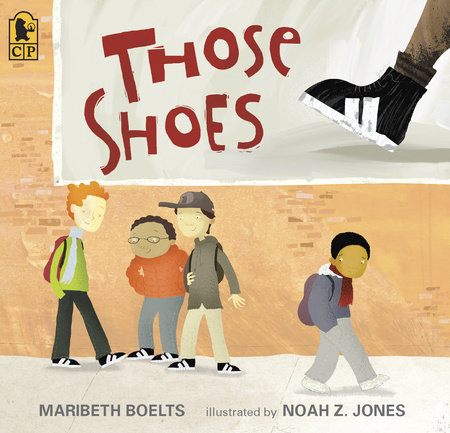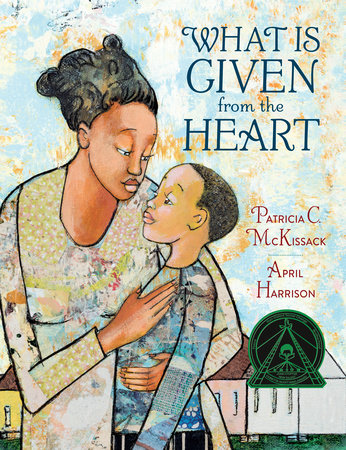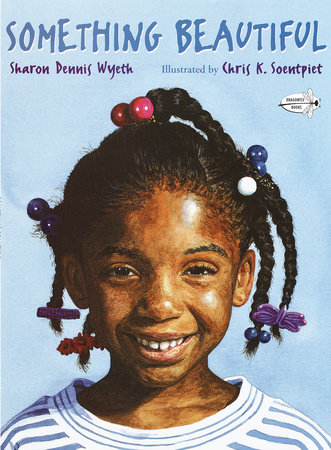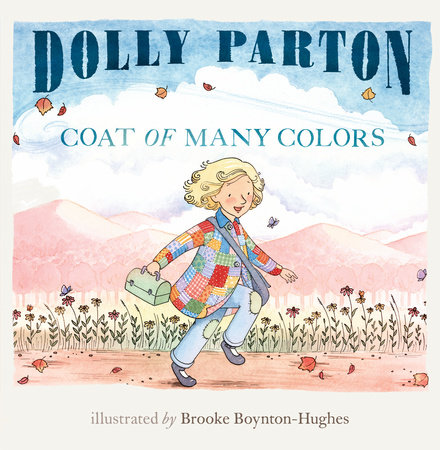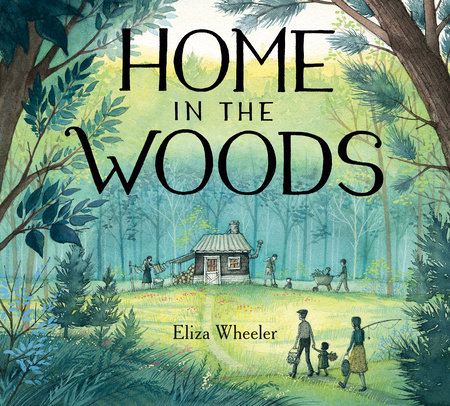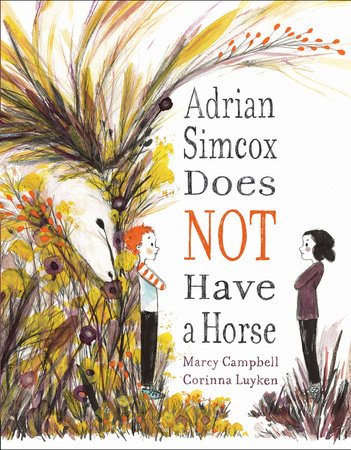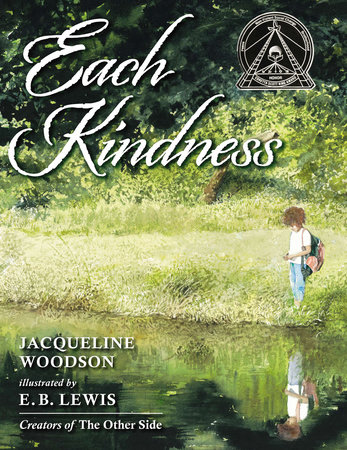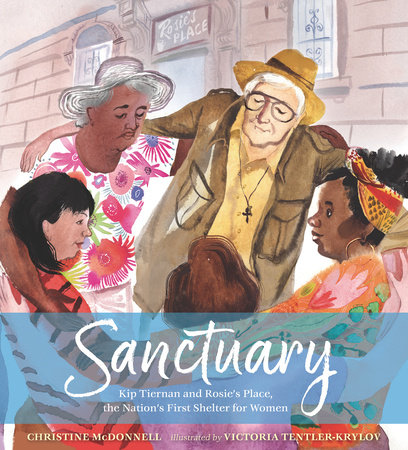9 Children’s Picture Books That Spark Conversations About Homelessness
by Miranda Rosbach
If you live in a city, you’ve likely encountered homeless people holding cardboard signs asking for money. When my oldest daughter was three, we saw one of these individuals at a busy intersection in St. Louis. From the back of the car, I heard, “Mommy, whenever I see one of those people, it makes my heart crumple.”
Confronting poverty and homelessness is a hard truth. It is an ongoing conversation that can hopefully build empathy for the human condition. When I lived in Washington, D.C., and volunteered for a breakfast shift at Miriam’s Kitchen, I found it strange to serve a green salad alongside scrambled eggs, toast, and waffles. When I asked about it, the head chef said it might be the only time in their day when someone is given a chance to eat vegetables. This mental paradigm shift has stayed with me for over a decade.
Poverty, food scarcity, mental health, and homelessness are tough issues we should discuss with our children. Don’t know where to start? These books offer a natural gateway to the conversation.
-
Those Shoes
Available from:Jeremy wants a pair of black high-top shoes that most of his classmates have. These shoes make you run fast and look cool. When Jeremy’s shoe comes apart in kickball, the school counselor gives him a Velcro shoe with a baby cartoon on it. Back in the classroom, all the kids (except Antonio) laugh at Jeremy’s shoes. On Saturday, Jeremy goes with his grandma to the store, and she droops when she sees the price of the fancy high-tops. So, they take the bus to several second-hand shops until they find the coveted shoes. They are too small, but Jeremy buys them anyway. At school, Jeremy notices Antonio’s shoes falling apart and realizes Antonio needs the shoes more than he does. This is a heartwarming story about want and kindness.
Also available from: -
What Is Given from the Heart
Available from:James Otis and his mama were already poor when their father and husband died. They move to a small house that floods right after they move in—and then their dog runs away. On Sunday, Reverend Dennis speaks of the Temple family that just lost everything in a fire. He asks the congregation to bring donations to fill a love box for the needy family. Mama uses her best tablecloth to make an apron while James Otis ponders what he could contribute. He decides to craft a unique book for seven-year-old Sarah Temple. With mixed-media illustrations and powerful text, this story stays with you long after you’ve turned the last page.
Also available from: -
Something Beautiful
Available from:A young girl looks at the rubbish in her courtyard and walks past the woman who sleeps in a cardboard box. She runs past the trash-filled alley and spots a desolate garden. At school, she learns how to spell the word B-E-A-U-T-I-F-U-L, and wants to find something that fits that description. As she searches, the girl eats a fresh fried fish sandwich at a local diner and watches neighborhood children playing on the sidewalk. At the corner bodega, Mr. Lee says his produce is beautiful, and at the laundromat, Aunt Carolyn lets the young girl hold baby Carl, who has a giggle that rings with beauty. Back at her front stoop, she looks out at the trash and the graffiti on the front door and decides to clean up the area. This take-action book is ideal for teaching children to make the world more beautiful with small, meaningful acts.
Also available from: -
Coat of Many Colors
Available from:When young Dolly Parton needs a new winter coat, her mother uses a box of colorful rags to make it. The other kids tease her, but Dolly holds her head high and tells them about the love and stories that her mother wove into each stitch, making her coat valuable. A famous song put into picture book format, this story comes with an author’s note and an additional song available to download called “Making Fun Ain’t Funny.”
Also available from: -
Home in the Woods
Available from:A young widow and her eight children find a rundown shack in the woods and take shelter in the warm summer months. We follow the family through the seasons as they make the best of the mother’s chore money, grow a garden, put up preserves in the fall, and hunker down for winter while sewing a patchwork quilt. Once spring arrives, they trade jam and bread for eggs and milk with a neighboring farmer, and they relish the simple beauties of wildflowers and singing birds. It’s a gorgeous tale told with heart. At the end, an author’s note shares her family history that inspired the story.
Also available from: -
Last Stop on Market Street
Available from:CJ boards a bus with his grandma on Sunday afternoon and heads to the local soup kitchen. At first, CJ is dismayed that they have to take the bus. Wouldn’t a car be easier? Then he asks grandma why he can’t have electronics, like the big boys he sees on the bus. With every new complaint, CJ’s grandma shows him how to find beauty in unexpected places. Even in a lurching bus ride, a blind passenger, the musician sitting next to them, and the dirty parts of town. We recently saw the musical production of this story in St. Louis, and it was as vibrant as the book itself. A must-have for any home library!
Also available from: -
Adrian Simcox Does NOT Have a Horse
Available from:Chloe knows that Adrian Simcox does not have a horse, and she can prove it. He gets free lunch at school, and his shoes have holes. He lives in town, and you can’t have a horse in the city. And lastly, horses are expensive. Meanwhile, Adrian chalks out a drawing on the recess pavement, expounding about the virtues of his beautiful horse (brown eyes, a white coat, and golden mane). On a walk one evening, Chloe ends up at Adrian Simcox’s house. His tiny house, with its tiny yard. When Chloe asks about Adrian’s horse, he opens up, sharing his imagination in vivid, descriptive language. It’s a lavishly illustrated book about empathy and making the best of what you have.
Also available from: -
Each Kindness
Available from:This book is about a young girl who doesn’t want to include the new girl, Maya, in her friend group. In fact, all the children ostracize Maya. When the class talks about kindness, each member drops a pebble into the water, watching the ripple effects, reflective of individual actions spreading outward. Yet the narrator forgoes her turn to drop a pebble in the water. This story delivers an important message about missed opportunities for kindness and how to avoid those regrets.
Also available from: -
Sanctuary: Kip Tiernan and Rosie's Place, the Nation's First Shelter for Women
Available from:Growing up in her grandmother’s home during the Great Depression, Kip saw the generosity of a matriarch who fed anyone that came to her door. As an adult in the late 1960s, Kip heard the call of change (calls to end poverty and war), and she made a career shift from advertising to working at Warwick House in the poor area of Boston. One night, she noticed a woman dressed in man’s clothes coming through the line for food. Kip discovered homeless women lived throughout the city — but the shelters only accepted men. After spending time in a New York shelter, Kip returned to Boston and pestered city officials to give her a building where she could serve homeless women. In 1974 she opened Rosie’s Place, a spot for women to gather for a hot meal, clean clothes, a bed, and a listening ear.
Also available from:

